In Truth Our Immanuel The Christology of the Belgic Confession
In Truth Our Immanuel The Christology of the Belgic Confession

“In this way He is in truth our Immanuel, that is, God with us.” This is the conclusion Article 18 of the Belgic Confession (BC) draws, after a long list of Scripture proofs. How does Guido de Brès understand Christ to be our Immanuel, why is that so important to him that he devotes two long articles to this confession, and what is its relevance for us today? These are the questions I deal with in this presentation. In doing so, I will concentrate on the doctrine of the person of Christ. Articles 18 and 19 of the Confession stand central here. But we will see that the person of Christ and His work are closely connected.
Article 10⤒🔗
Having said that, the Christology of the BC doesn’t begin in Article 18. Already in Article 10, the doctrine of the Trinity leads us to conclusions in relation to Christ. Here, Christ is confessed as God. In doing so, the Confession closely follows the footsteps of the Council of Nicea of 325AD. Over against Arius’ denial of the essential divinity of Christ, Nicea confessed that He is homoousios with the Father, of one essence.1 In Article 10, de Brès takes over this expression.
Moreover, in condemning Arius’ contention that there was a time when the Son did not exist, Nicea gave expression to the eternity of Christ. Here, too, article 10 explicitly draws on the Nicene Creed: He is the Son of God, not from the time that He assumed our nature, but from all eternity. Bringing together the Old and New Testaments, the Confession constructs an ingenious body of Scripture proof, and concludes: “And so He is (the)2 true, eternal God, the Almighty, whom we invoke, worship and serve.” This is a robust conclusion. Christ is not just ‘truly God’, He is the ‘true God, whom we invoke’. Here, we confess not only the divinity of Christ, but also the unity of God. If Christ is God, then He is none other than the One God.
As robust as this conclusion is, it has been quickly drawn. Article 10 does not contain an explicit polemic, and its Scripture proof, as ingenious as it is, is not elaborate. In that regard, Article 10 is distinctly different from Articles 18 and 19. There was no dispute here between Roman Catholics, Lutherans, and those who were Reformed. And even with the Anabaptists, the real point of contention about Christology lay elsewhere. The only polemic Article 10 implicitly engages in is with Arius. In this article, de Brès confronts an opponent of more than twelve centuries earlier.
It seems to me that in our time a Reformed confession should take a different approach. It is especially the divinity of Christ that has been vehemently challenged in the past few centuries. The confession of the incarnate God has been described as a myth.3 What was a commonly accepted understanding in the 16th century is now a deeply disputed confession. In our time, de Brès’ robust conclusion would require more substantiation. At the same time, Article 10 neatly illustrates that the Belgic Confession always had a catholic intent. It stands in the line of the confession of the church of all ages. Jesus Christ is the true God, whom we invoke.
Article 17←⤒🔗
The confession of Articles 18 and 19 also presupposes what is contained in the wonderful Article 17. This is where the real Christology of the Belgic Confession begins. When we compare the earlier Confessio Gallicana with the Belgic Confession, we see that in this article de Brès makes an original contribution. Much of Article 17 of the Belgica, corresponds with Article 13 of the Gallicana, but two significant elements are added.4
The first of these is the emphasis upon the grace of God:
God ... set out to seek man when he trembling fled from Him. He comforted him with the promise that He would give him His Son. In doing so, God displayed His marvellous wisdom and goodness.
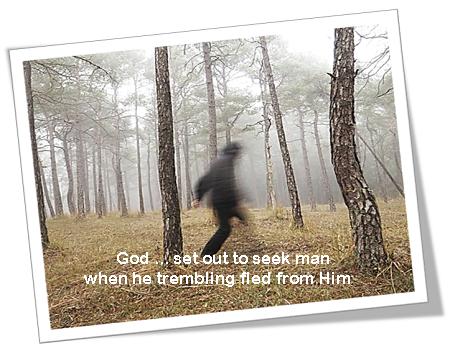
This moving beginning sets the Confession’s whole Christology in a warm light. That indeed is how we may speak of Christ. Whatever polemic may follow stands in the light of this confession of the grace of God.
The tone of the Confession’s Christology is never one of rational explication, however much description and explanation it may contain. Its tone is one of wonder and gratitude. As far as I am concerned, the Belgic Confession is superior here to the Heidelberg Catechism. The latter begins the doctrine of our salvation in Lord’s Days 5 and 6, and follows the line of Anselm in his explanation of the incarnation. The fact that the incarnation is the ‘great mystery of godliness’, to use the words of 1 Timothy 3:16, finds clearer expression in this article than it does in the Catechism.
Polman righty points out that there is no contradiction between Article 16, which deals with election and reprobation, and Article 17, which highlights the grace of God in Jesus Christ.5 It is not so that here a cold dogma stands over against a warm dogma. Still, it is true that Article 17 follows only one of the lines of Article 16. It is the line of the mercy of God in Jesus Christ, the line of divine election. The other line of Article 16, that of the justice of God, finds different expression in Christology than it does in the doctrine of election. In Article 16, God displays his justice in that,
...He leaves the others (those who are not elect) in the fall and perdition into which they had plunged themselves.
In Christology, says Article 20, God shows His justice by punishing our sins in Jesus Christ. Article 17 sets the tone for this approach.
Reference←⤒🔗
The second original element of Article 17, compared to the Gallicana, is its reference to the promise of God, specifically the ‘mother promise’ of Genesis 3:15. Of course, this is no original discovery of de Brès’. However, he does have a specific reason to make this connection here. That becomes clear in Article 18, which picks up this line of the promise:
We confess, therefore, that God has fulfilled the promise made to the fathers ... when He sent into the world His Son.
Part of the polemic that Article 18 pursues with the Anabaptists concerns the relationship between the Old and the New Testaments, between the promise and its fulfilment. De Brès keeps these close together. Christology does not begin in the New Testament. It goes back to the beginning in Paradise, after the Fall. There is continuity in the mercy of God, a continuity that Anabaptist thinking breaks up.
Koopmans beautifully expresses the great difference between the Jewish and historic-critical approaches to the Old Testament on the one hand, and that of Christian dogmatics on the other. The former acknowledge that Christ has a historical relationship with the Old Testament, but they deny the reverse: that the Old Testament stands in relationship to Christ. The Christian faith reads the whole Old Testament as a witness to Christ, in line with John 5:39:
In Jesus Christ all the promises of the Old Testament are yes and Amen.
That first promise after the first sin has a very special and particular reference to Christ.6 Here, the Belgic Confession leads the way for us in a Christological reading of the Old Testament.
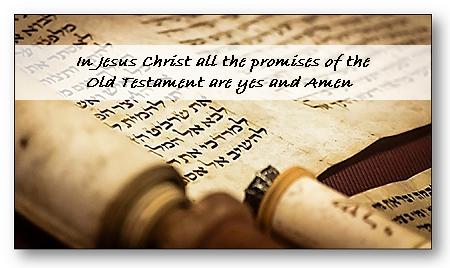
Article 18←⤒🔗
Article 18 deals with the incarnation of Jesus Christ. The kernel of this article is the confession that Christ ‘truly assumed a real human nature with all its infirmities, without sin’. The polemic in this article explicitly directs itself against the Anabaptists. We already referred to its conclusion, that ‘in this way Christ is our Immanuel’. I’d like to examine these three elements in order: the kernel, the polemic and the conclusion.
a. The kernel←↰⤒🔗
To begin with, the kernel of the article: the real human nature of Christ. This statement presupposes that Christ is God’s own, only-begotten and eternal Son. In other words: the confession of Article 10 is the starting point. At the same time, the emphasis rests fully on the Saviour’s true humanity. It is striking that the reference to Philippians 2 does not include that Christ was ‘in very nature God’, only that he took ‘the very nature of a servant’, and was ‘made in human likeness’. Christ has this true human nature, says the article, because he was ‘conceived in the womb of the blessed virgin Mary by the power of the Holy Spirit’. In his Le baston de la foy, de Brès explicitly refutes the veneration of Mary.7 However, here he does not hesitate to call Mary ‘the blessed virgin’. And in doing so, he uses the language of Scripture. At the annunciation the angel Gabriel greets Mary by saying ‘you who are highly favoured’, (Luke 1:28). Elizabeth, the mother of John says: ‘blessed are you among women’ (vs 42). And Mary herself, in her Magnificat, sings that ‘from now on all generations will call me blessed’ (vs 48).
Later orthodox Protestantism has rightly upheld the virgin birth of Christ, but it has often neglected to acknowledge Mary as blessed. There was such resistance to the veneration of Mary, that frequently her person was lost from view. With the consequence, however, that in the name of Scripture, the truth of Scripture is set aside. It is good that in Article 18 de Brès chooses another path. He calls Mary ‘blessed’. He also had a theological reason for doing so – we will see that when we explore the polemic, below. But we need to acknowledge that de Brès simply does what Scripture asks him to do. Here too, may we follow his lead!
What does it mean?←↰⤒🔗
Concretely, what does this human nature mean? De Brès points to two aspects: first, Christ assumed a real human nature with all its infirmities; second, a true human nature includes both body and soul. As to the first: Koopmans argues that the Confession does not really go far enough. Scripture says that the Word, in becoming human, ‘became flesh’. ‘Flesh’ implies a judgement. It points to the fact that man has sinned, and is therefore subject to death. In becoming human, Christ falls under this judgement of death. Koopmans wants to go somewhat further than the Confession: to him Reformed Christology maintains a certain reserve, with the result that ‘the Biblical concept of ‘flesh’ has lost some of its edge’.8 In this regard, Koopmans allies himself with Karl Barth.9 Actually the Confession does point out that Christ has borne our sins (Article 20). And according to Article 19, one of the infirmities of humanity is its mortality. But the Confession is more cautious at this point than Barth, who writes that ‘in Christ, God has become the greatest of all sinners’.10 In contrast to Koopmans, I appreciate this caution. As much as Christ has become sin for us (2 Corinthians 5:21), and has become a curse for us (Galatians 3:13), He still remains the holy child of Mary (Luke 1:35) who had no sin (2 Corinthians 5:21). The holiness of Christ is not just the glory of His divinity, it also relates to his humanity: He goes before us in our service to God. When we speak about Christ, we must always use two words: in this case ‘the guilty innocent’. Innocent of any evil of his own; guilty on account of our evil.
In relation to the second aspect, that Christ became human ‘in body and soul’, there is something remarkable about the original text of Article 18. There we read that the Son of God ‘not only assumed a human nature, but also a true human soul’. This seems to suggest that ‘a true human nature’ refers only to the body. But this can hardly be the intention, and the amendment made by the Synod of Dort (1618/1619) is quite understandable. Now, the text reads that he ‘not only assumed a human nature as to the body, but also a true human soul’. The argument for this is fully in the line of the patristic polemic against Apollinaris, who denied that Christ assumed a human soul or a human spirit. Article 18 says:
For since the soul was lost as well as the body, it was necessary for Him to assume both to save both.
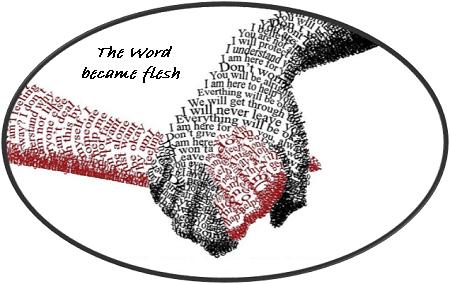
Gregory of Nazianzus had said it already: ‘That which was not assumed, was not healed’.11 This links wonderfully with the doctrine of salvation. As I said before: the Person and the work of Christ cannot be separated.
b. The polemic←↰⤒🔗
The polemic of Article 18 explicitly opposes the Anabaptists: ‘contrary to the heresy of the Anabaptists, who deny that Christ assumed the human flesh of His mother’. An abundance of text proofs from the Old and New Testaments demonstrates the error of Anabaptist teaching. The thrust of this proof is: Christ is a true descendant of Abraham, of Judah, of the Jews, of Jesse, of David, of Mary. This Scripture proof is framed within two references to the book of Hebrews: Ch 2:14: ‘Christ partook of the flesh and blood of the children’, and a combination of ch 2:17 and ch 4:15: ‘He had to be made like His brothers in every respect, yet without sin’. That is the theological reason for de Brés’ description of Mary as blessed: she is truly the mother of the Lord. Menno Simons denounced the church’s doctrine of the incarnation as ‘an unchristian doctrine’.12 Whoever joins Christ with the human race, said Menno, joins him to Adam, and thus to Adam’s sin.
Whoever contends that the man Christ Jesus should be of the flesh of the woman, yes, the natural seed of Abraham and of David, all of whom descended from Adam’s unclean, sinful seed, must also include Adam’s unrighteousness, curse and judgement.13
The Word became flesh. Not of Mary’s body, but in her body, as a heavenly fruit in an earthly field. For Menno, John 1:4 is central: ‘The Word became flesh’, in the sense that ‘the Word turned into flesh’. This does not mean that Christ assumed the human nature of Mary. And if John 1:4 is to be taken literally, then the texts which say that Jesus descended from Abraham or David necessarily cannot be taken literally. The promise of the coming Saviour was made to them, and this promise has been fulfilled. That is why Jesus was called their Son, argued Menno, because he was born according to that promise.14
c. The conclusion←↰⤒🔗
We already took note of the conclusion of Article 18. In truth, Christ is our Immanuel, God with us. Full justice must be done to both elements of His name. Christ is God, the true and eternal God whom we invoke: that was the conclusion of Article 10. But he is no less with us. He is no stranger to our world, our human nature, our trials, our mortality. He fully partook in them. In Christ, God has come very near to us. Christ has not redeemed us by intervening in our world from ‘out there’ or ‘up there’. Christ has redeemed us from ‘right here’, by becoming one of us.
Again, we see how de Brès connects the Person and work of Christ. What he has done as our Immanuel is dealt with is Articles 20 and 21. But He is our Immanuel through the miracle of the incarnation. Christology is not merely a technical exposition of a Person and His natures. It is a confession that God has come to partake in our created reality, a reality that is subjected to death, so that we might partake in His divine nature, and live forever.
This Mennonite view of the incarnation was shared by other Anabaptist leaders of that time. It had its roots in a combination of factors: the Anabaptists’ resistance to the power of tradition, which led to the rejection of the creeds of the early Church, biblicism (appeals to texts in isolation) and dualism (fallen human nature is identified with evil).
Many discussions took place between Reformed and Anabaptist leaders, but little progress was made.
Almost half of Guido de Brès’ De Wortel, den Oorspronck ende het Fundament der Wederdooperen (The Root, the Origin and the Foundation of the Anabaptists) is devoted to this question.15 To him, this was almost as sore a point as the dispute about infant baptism. De Brès strongly emphasises the promise of God: God promised to send His Son, the offspring of Eve, of Abraham and of David, and God does what He has promised.16 This emphasis on the promises of God resonates in Article 18. It assumes the unity of the Old and New Testaments. No-one who accepts this unity can possibly be a dualist. God is our Redeemer as well as our Creator. He redeems His Creation, and mankind whom He created, by having His Son truly share in their nature.

Article 19←⤒🔗
What does this mystery of the incarnation mean for our confession of Christ? That is what Article 19 deals with. Again, I distinguish, in order, between the kernel, the polemic and the conclusion in this article.
The kernel of this article is found in its connection with the declaration of the fourth Ecumenical Council of Chalcedon: Christ is two natures united in one single Person: inconfusedly, unchangeably, indivisibly, inseparably.17 The polemic, implicit in this article, is directed against the Lutherans. And the conclusion is that Christ, by His death, has overcome death for us.
a. The kernel←↰⤒🔗
In relation to the kernel: While Chalcedon is not quoted directly, it is clearly present in the background of the terminology: two natures united in one single Person. Moreover, the statement that ‘each nature retains its own distinct properties’ is a direct reference to the declaration of Chalcedon.
Following this reference, the Calcedonian terms ‘inconfusedly’ and ‘unchangeably’ are explained. The divine nature of Christ shares in the divine properties of the Godhead: always uncreated, eternal, filling heaven and earth. His human nature retains everything that belongs to a true body: it is a creature, it has a beginning and is finite. Its reality was not changed by His resurrection. Fortunately not, for our resurrection is dependent on the human reality of His body. Here again, we see that Christ’s Person and work are connected. As technical as the language may be, what we are talking about here is our salvation. Next, the Confession considers the terms ‘indivisibly’ and ‘inseparably’: Because these two natures were united in one Person, they were not even separated by His death, no less than when He was a little child.
Once again, we note a striking formulation in the original French and first Dutch editions. They do not say that these two natures are united in one Person, but that these natures together make up one Person (French: faisant une personne). The Synod of Dort amended this expression to the more commonly used ‘united in one single Person’.
Discussion←↰⤒🔗
During the 1930’s, a discussion raged within the Reformed Churches in the Netherlands whether you could speak of the impersonal human nature of Christ. If so, the Person of the incarnate Word would have been the eternal divine Person of God the Son. K Schilder argued against this notion: when we speak of the Person of Christ, we take into account the historic fact of the union of His two natures. In support of his argument, he referred to Article 19. According to Schilder, ‘Person’ here refers to the undivided Lord Jesus Christ, consisting of two natures: not just the divine Person of the Son.18
The expression de Brès used can be compared with the remarkable heading John Calvin gave to his Institution II, 14: Quomodo duae naturae Mediatoris unicam efficiant personam: ‘How the two natures of the Mediator make one Person’.19 It is quite possible that in his choice of words, de Brès drew on this title.
In his dissertation concerning the dogma of the Early Church, Koopmans shows that Calvin’s focus in his Christology was on ‘the appearance of the God-Man, Immanuel’.20 He refers to Calvin’s statement in his Institutes, II, 14, 3: ‘But the passages that comprehend both natures at once ... set forth His true substance most clearly of all.’21 For Calvin, the person of the Mediator is identified with the Person of the incarnate Son of God. For de Brès, it is no different. Actually, it is rather a pity that at this point Dort decided not to retain the original text.
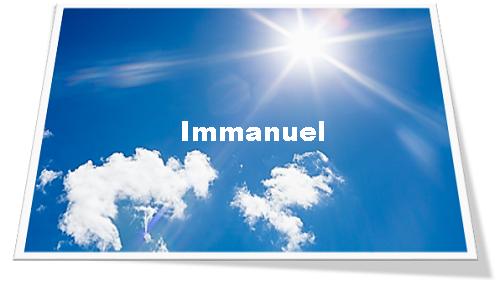
b. The polemic←↰⤒🔗
Now, the polemic: the background to the article is found in the ongoing discussion with the Lutherans. In contrast to the Anabaptists, the Lutherans are not identified by name. And what is being challenged is not a ‘heresy’; it is seen as a threatening deviation from the declaration of Chalcedon. Lutherans hold to a communicatio idiomatum, a communion of properties, in which the human nature begins to share in the majestic properties of the divine nature. The Formula Concordiae, the definitive Lutheran confession, states that after His resurrection, Christ ‘as a human is omniscient, omnipotent, and omnipresent with all creatures’.22 This has become known as the ‘doctrine of ubiquity’, the teaching that Christ in His human nature is everywhere present, so that His body and blood are present in, with and under bread and wine in the Holy Supper.
Where Article 19 explicitly limits the ‘filling of heaven and earth’ to Christ’s divine nature, and describes His human nature as being finite, it clearly distances itself from the Lutheran view. True, Reformed doctrine also speaks of a communicatio idiomatum, but then in the sense that all the properties of both natures are properties of the one Person. This is analogous to saying that Mary is the mother of God, for the Person who according to His human nature was borne from her is at the same time true God. But communicatio idiomatum across the two distinct natures is rejected.
We ought to note, however, how restrained this article is in its language. Neither the Lutheran view nor the ‘extra calvinisticum’ are explicitly mentioned. The Heidelberg Catechism does so, where it says that Christ’s divinity is ‘beyond the human nature it has assumed’ (Lord’s Day 18). Clearly, de Brès had no desire to force the issue here. At the same time, it is clear that he wished to stand firmly upon Reformed doctrine, and upon the ‘indivisible’ and ‘inseparable’ of Chalcedon. Nothing may be taken away from the true humanity of Christ.
c. The conclusion←↰⤒🔗
And now the conclusion of Article 19:
For this reason we profess Him to be true God and true man: true God in order to conquer death by His power, and true man that He might die for us according to the infirmity of His flesh.
Once again, we see here the connection with the doctrine of salvation, the connection between the Person and the work of Christ. Article 19 does not indulge in a philosophical discussion whether or not the finite is capable of encompassing the infinite. The confession of the unchanged character of Christ’s humanity serves the purpose of salvation, no less than the confession of His divinity does. God alone is able to overcome death. That is how powerful our Saviour is. However, He did so by, in the weakness of His humanity, undergoing death for us. That is how close He came to us. And that, for us, is eternal salvation.
Summary and Conclusion←⤒🔗
It is clear that the Christology of Articles 18 and 19 is determined by its time and place. Article 18 is unthinkable aside from the controversy with 16th-century Anabaptists. This discussion was needed, especially in the Netherlands. And that is why the Confession devotes extra attention to it. Article 19 is rather different. This article is not entirely defined by the discussion with the Lutherans. Still, the accents laid in this article (the humanity of Christ was not changed, even after his resurrection) are hard to explain apart from their historical context: the ongoing discussions between Lutheran and Reformed.
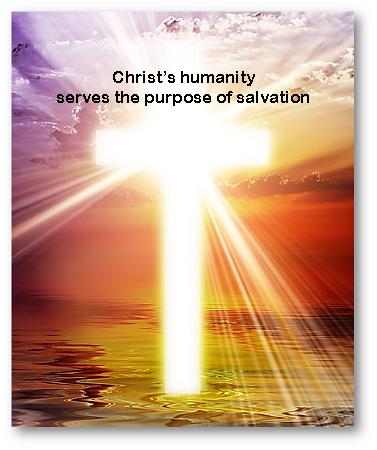
The effect of both of these discussions is that the confession of Christ as a true human being is strongly accented. And in doing so, the Confession also picks up an element from the history of the early church. The first struggle that Christology faced was that against Gnostic Docetism. The dualistic character of Gnosticism resisted the confession concerning the incarnation of the Word. Instead, Docetism taught that Jesus only appeared to be human. The apostle John already had to face this struggle. Traces of this struggle are found in his Gospel, and it is much more clearly visible in his first two letters. The polemic with Anabaptist teaching clearly resembles this controversy. This too was a form of dualism, which made Jesus in His humanity a stranger to believers: He did not truly share in our humanity.
Different Level←⤒🔗
The discussion with the Lutherans takes place on a different level, but there are similarities: in the doctrine of Christ’s ‘ubiquity’, He is no longer like us in all things. The Belgic Confession takes a clear stand in support of the continuing integrity of Christ in His human nature. In the centuries that followed, attention within orthodox Christology has shifted to the confession of the divinity of Christ. In our time, a confession would do well to pay more attention to that than the Belgic Confession does. At the same time, the Confession does articulate an inheritance that the church cannot give up: the mystery of God revealed in the flesh. In recent centuries, orthodox Christology has not been free from the influence of Docetism. And to some extent this has also been true of Reformed Christology.23 The effect of Docetism will always be that Christ becomes a stranger to us. The relevance of the Christology of the Belgic Confession is that it brings Christ very close to us: He really is one of us. The beauty of this Christology is found in that it highlights the close and inseparable connection between the Person and the work of Christ. This Christ, God and man, is our Saviour. Truly, He is our Immanuel. More than that we will never need.

Add new comment